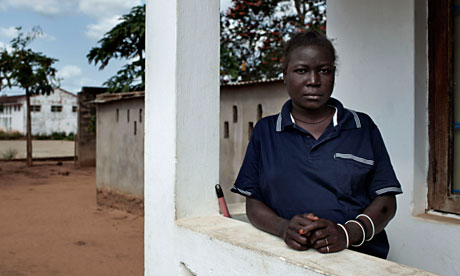
Merely controlling HIV and Aids will cost between $397bn and $733bn over the next 20 years – and unless more money is spent the pandemic will continue to spread, experts warned today.
If funding is not increased from 2009, infections could rise from 2.3 million a year to 3.2 million by 2031, claimed a report by the aids2031 financing group, headed by the Results for Development Institute in Washington DC.
In the Lancet medical journal, the group warns it is "increasingly improbable" in tough economic times that donors and governments will find enough money to fund a rapid increase in universal access to prevention and treatment services by 2015. It is estimated that would prevent about 7 million more deaths and 14.2 million infections than if efforts continued on the present scale.
Just this week, donors in New York pledged $11.7bn for the Global Fund to fight Aids, TB and malaria, less than the $13bn it had set as the minimum to fund the current disease-fighting programmes. The Global Fund and Pepfar (the US president's emergency plan for Aids relief) are the two biggest sources of funding for Aids prevention and treatment in developing countries.
However, the aids2031 paper did reveal more efficient ways of using the funding available. And some developing countries with higher incomes and less intense epidemics, such as China, India and the Ukraine, may be capable of taking over the costs of fighting HIV themselves, leaving more money for poorer countries.
The figures, said Dr Robert Hecht, the managing director of the institute and lead author of the paper, "suggest that we have a long, hard road ahead of us in terms of what it is going to take to combat Aids. But there is a window of opportunity in the next couple of years. Countries can really change where they are going in terms of how many lives they save and infections they prevent.
"It is a hopeful message. The leaders in these countries have some rather distinct choices. The key thing is to spend the money extremely well and get the most value from it."
That would include investing in effective prevention techniques, such as circumcision, while mounting behaviour change campaigns and seeking low-cost drugs for treatment.
The authors identify three distinct groups of countries – those with high burden of disease and low income (such as Mozambique), those with low disease burden and middle income (such as China) and those with high disease burden and middle income (such as South Africa).
The situation in the poorest, such as Zambia, Mozambique, Kenya, Malawi and Uganda, is most worrying and unlikely to improve in the next few years. "What these countries are starting to spend is going to be anywhere between 3% and 6% of GDP. That is a staggering fact to think about."
The group warns that even if the world adopted the most comprehensive strategy currently possible for preventing transmission of the disease, HIV would not be halted. They estimate that 1.2 million people would still become infected in 2031, "meaning that even under the best circumstances there will be a persisting epidemic in 2031, 50 years after the emergence of HIV/Aids." Without a technological breakthrough such as a vaccine, HIV will continue to spread.

